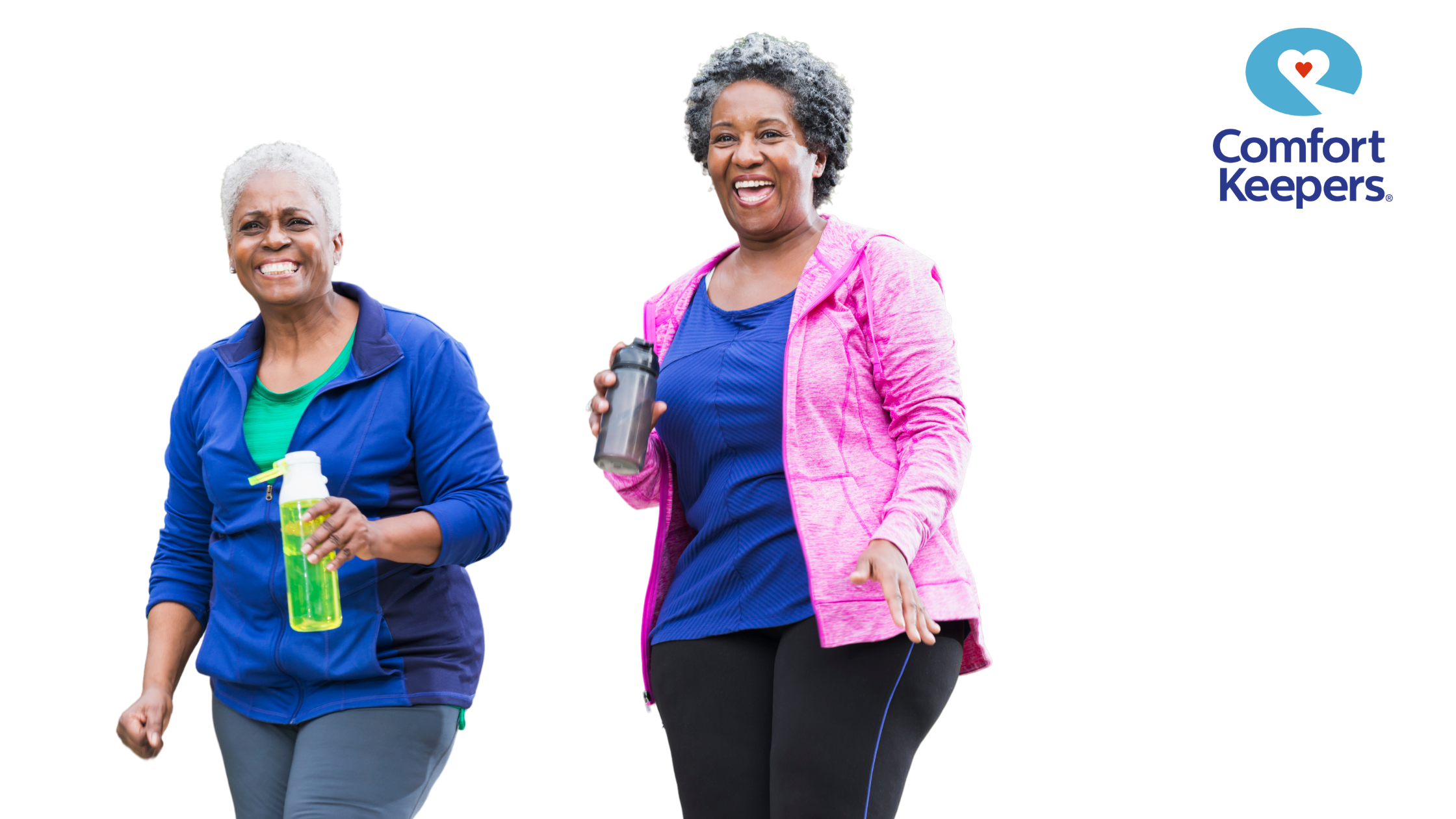Ageless Walking: 7 Ways to Boost Your Walk for Senior Health
According to the American Heart Association, moderate-intensity aerobic activities, such as brisk walking, can help improve cardiovascular health.
If walking is your favorite form of exercise as an older adult, you have more to gain than pleasure. In fact, the benefits of walking run deep for seniors. According to studies, walking supports digestion, strengthens the heart and lungs, increases flexibility, reduces the risk of dementia, diminishes urinary incontinence, and may extend life. But how, where, and with whom you tread on foot makes a difference when reaping the full perks of walking later in life. Don't let your next jaunt fall short of its potential. These ideas will help make your walking routine even more healthful, productive, and satisfying.
Increase Pace Your Way
To gain the most health benefits from walking, pace matters. You might set out at a pretty good clip only to lose steam halfway through. The good news is there are ways to increase pace without getting worn out. One method is to break up the activity. A 10-minute power walk three times a day can be just as rewarding as lumping the exercise into one session. You might also take your walk during times of the day when you feel most alert and energetic. Bear in mind, that any movement is better than none. Even a leisurely stroll has health advantages.
Seniors with limited mobility can also safely get exercise with the support of an in-home caregiver, like those who work for Comfort Keepers in Inver Grove Heights, MN.
Walk Regularly
A few days a week of walking is helpful but try to do it more often if you can. The CDC recommends adults 65 and older get 150 minutes of moderate-intensity exercise, like brisk walking, per week. That translates to 30 minutes of walking a day five days a week, an ideal guideline for establishing a healthy walking habit. The more regular you are with exercise, the more likely it will become a pattern you'll embrace and stick to for the long haul. Plug the activity into your schedule for most days of the week. Stay committed and you'll see and feel the results.
Improve Walking Wear
As you age, so do your feet, joints, bones, and muscles. Proper footwear while walking will help maintain the health of your lower and upper body and make the exercise more comfortable and productive. Well-fitting shoes also go a long way in helping to prevent injuries and accidents. How you dress does too. Wear clothing that's breathable, loose, and the right weight for the climate. In sunny weather, be sure to don a hat, sunglasses, and sunscreen to avoid damage from harmful rays. Take your walking wear seriously; it'll enhance the quality, safety, and satisfaction of the exercise.
Tread on Safe Terrain
According to the National Institute on Aging, one in four older adults 65 and older fall each year. Although the reasons vary, where you walk can up the odds of an accident. Walking outdoors, for example, presents many possible hazards. Uneven paths, rocks in the road, sidewalk imperfections, icy conditions, and more can make walking less safe. Many older adults lack the agility to brace themselves from a slip or fall. If you choose to walk outdoors, do it in areas that are well-lit, smooth, and stable. Sometimes it's better to do your walking indoors on an obstacle-free, flat surface.
Focus on Form and Posture
For steadiness, balance, and vigor while walking, form and posture are key. Mayo Clinic outlines a proper walking posture that starts with holding the head high and looking forward, with the chin parallel to the ground. The back should be straight and the stomach muscles tight, while the shoulders move naturally and arms swing freely. Roll the feet from heel to toe as you step. Of course, age can bring body changes that make the proper walking posture more challenging. Check with a fitness specialist or doctor for ways to adjust forms to accommodate aging issues and medical conditions.
Grab a Partner--or Not
A walking partner, like a friend or family member, can be motivating and encouraging. But choose wisely. While romantic partners may help increase walking activity, they have a downside. A study by Purdue University found that gait speed is reduced when walking with a life partner and even more so when holding hands while walking. A slower gait, in turn, decreases the health benefits of the exercise. Still, the perks of walking partners may outweigh any disadvantages they bring. Bear in mind, that dogs make good walking pals, too, and can be trained to move at your pace.
Tend to Aches and Pains
Senior adults are prone to achiness due to aging bones, muscles, and joints. While exercise can help you feel better, tending to aches, pains, and stiffness is essential for keeping you active and in good physical health. It's easy to ignore nagging soreness, but don't brush it off. Instead, talk with your doctor about how to treat your discomfort so you avoid aggravating or worsening the problem. Experts consider walking a very safe form of exercise. By nurturing your body and keeping it in shape, you can maintain your walking routine for years to come.
Walking is an ageless activity that has enormous health benefits for seniors. Let these ideas help boost your daily walks so you can enjoy them more, feel the difference in your health, and make walking a lifelong habit. If you need support to remain independent in and around the home, in-home care may be a great option. At Comfort Keepers, we help many seniors continue to do the hobbies, like walking, that they love.
Sources:
Centers for Disease Control and Prevention, "How Much Physical Activity Do Older Adults Need?" (April 13, 2023), cdc.gov/physicalactivity/basics/older_adults/index.htm#:~:text=Adults%20aged%2065%20and%20older,of%20activities%20that%20strengthen%20muscles.
Cho, HyeYoung, et. al., "Changes to Gait Speed When Romantic Partners Walk Together," Purdue University (February 2021), sciencedirect.com/science/article/abs/pii/S0966636221000552.
Mayo Clinic, "Proper Walking Technique," mayoclinic.org/healthy-lifestyle/fitness/multimedia/proper-walking-technique/img-20007670.
National Institute on Aging, "Falls and Fractures in Older Adults: Causes and Prevention," (September 12, 2022), nia.nih.gov/health/falls-and-fractures-older-adults-causes-and-prevention.










